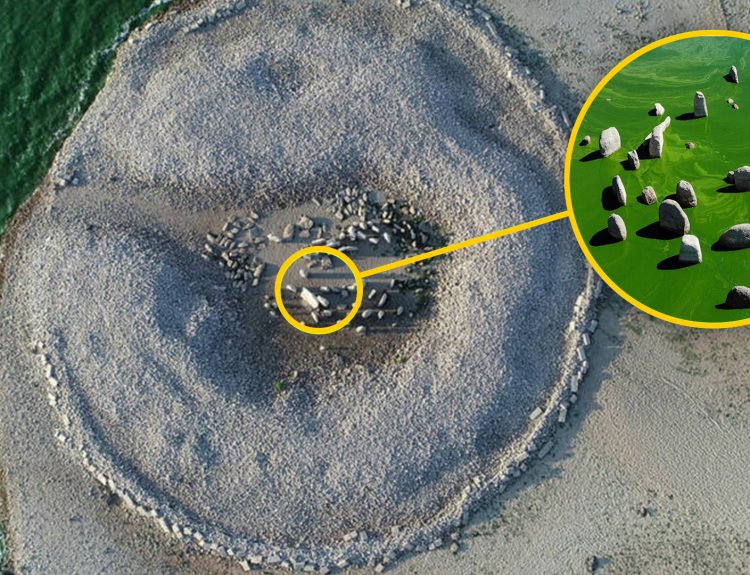Archaeology work at the site of a picturesque Polish castle, which is part of a medieval fortress, has been an ongoing project. The objects that have been recovered help paint a clearer picture of life in medieval Poland, the people who lived there, and the history of the region.
One of the most recent finds at this castle, the Wawel Royal Castle, is a medieval ring that was unearthed below one of the castle’s four towers. The discovery of this one-of-a-kind gold ring tells us about a pivotal time in history.
The Wawel Royal Castle
Krakow is Poland’s second largest city. The Vistula River flows through the area and on its left bank, atop a rocky outcropping, sits a medieval complex that includes Wawel Royal Castle. The castle is actually a later addition. A fortress came first, strategically situated to overlook the river.

A cathedral was next. It was built roughly 1,000 years ago and witnessed the coronations of several Polish kings. Sometime in the 13th century, work began on the castle itself. For several centuries, the Wawel Royal Castle was the personal residence of the Polish monarchy.
Grand Architecture Fit for Royalty
The original castle was much smaller than what it looks like today. In the early 11th century, King Boleslaw I Chrobry commissioned the construction of a small residence. It was under the reign of Casimir III, called Casimir the Great, that the small, simple home was expanded into a grand Gothic-style castle.

Casimir the Great’s castle, however, was destroyed by fire in 1499. After that King Sigismund I, called Sigismund the Old, ordered a palace to be built to replace it. This beautiful castle, modeled after Italian castles, took three decades to build. Today, the former home of the Polish royal family is now one of Poland’s most-visited art museums.
A UNESCO World Heritage Site
The entire complex – which includes the Wawel Cathedral, the Wawel Royal Castle, and several other important buildings – is treasured by the people of Poland for both its cultural and historical significance.

One of the most popular tourist destinations in Poland, the fortified complex was declared a UNESCO World Heritage Site in 1978. Jerzy Trzebinski heads up the research team doing ongoing investigations into the history of Wawel Royal Castle.
A Small Gold Ring
It was Jerzy Trzebinski who discovered the small gold ring during a recent excavation at the foot of one of the Wawel Royal Castle’s four residential towers, the Danish Tower. The ring was discovered sitting on top of a newly unearthed stone defensive wall, as if someone slipped it off and placed it on the wall for safekeeping.

According to Trzebinski, the ring is made of gold and is believed to date to the 11th century. A spokesperson for Wasel Royal Castle said, “Wawel never ceased to amaze us. Recently, an extremely rare discovery has been made in the form of a golden, early medieval ring!”
Who Could the Ring Have Belonged To?
Researchers and historians suspect that the gold ring may have belonged to a member of the Piast family. The House of Piast was the first royal family of Poland and their dynasty began with the reign of Mieszko I in the late 900s.

The Piast family dynasty remained in power until 1370 when its most prominent member, King Casimir III the Great died. But that wasn’t the end of the Piast family. Poland’s next royal family, the Jagiellonian dynasty, originated with Casimir III’s daughter.
A Two-Faced Ring
Admittedly, only a few gold rings from the medieval era have ever been found in Poland. All of them, however, have been plain gold bands with no decorative features. This recently discovered ring is different … one of a kind.

There are two faces on the ring. The features of the faces are simple in their design and oppose each other. They are arranged like they are conjoined at the head. For this reason, the spokesperson for the Wawel Royal Castle called this “a unique discovery.”
“It Is Impressive!“
The shape and size of the gold ring is similar to other rings made in Poland in the Middle Ages. Most experts believe that the ring was locally made. But it is unique in its design. As the castle spokesperson noted, “The specimen uncovered at Wawel is unique because of its decoration.”

“This is the only example where human – and, in general, figurative – images are depicted on an early medieval ring in Poland,” added the spokesperson. “You have to admit it is impressive!”
It Is What’s Not on the Ring that Is Notable
The experts who examined the recently discovered gold ring quickly noted one unexpected peculiarity. There is no Christian iconography on the ring. This might provide a clue to the ring’s age and who may have owned it.

The spread of Christianity throughout Poland was a slow process. It took several centuries for the religion conversion to be complete because Christianity was intrinsically linked to the politics and culture of Europe.
Poland, Mieszko I, and the Great Schism of 1054
When Christianity was taking root in Europe, the faith was influenced by the Byzantine Empire. The Eastern Orthodox Church emerged as a result of this influence. The Great Schism of 1054 marked the moment when the Eastern and Western Christian churches accepted their difference.

Poland, as well as Hungary, accepted Roman Catholicism in the aftermath of the Great Schism of 1054. Nearly a century before this, however, King Mieszko I gave in to the pleas of his wife, Dobrawa of Bohemia, and became Christian. The king was baptized on April 14, 966.
Pagan Symbols on the Gold Ring
The experts at Wawel Royal Castle believe that the two faces on the gold ring represent the Roman god, Janus. Janus rules over doorways, passages, gates, duality, time, and new beginnings. This mythical deity is often depicted as a two-faced person.

If the newly found gold ring really depicts a pagan god and dates to approximately the same time that King Mieszko I was baptized, it is representational of the time in Poland’s history when the country was transitioning to Christianity. It also narrows the timeframe. The Pagan Reaction in Poland in the 1030s put an end to pagan worship.






